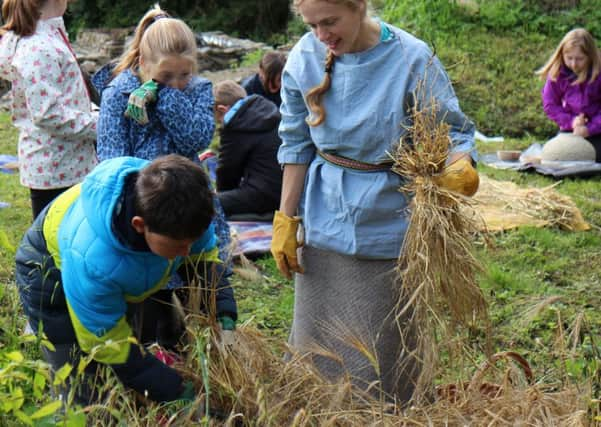Iron Age roundhouse plan raises '˜theme park' fears at Whithorn Priory


The scheme will see a full-size replica of a 3,000-year-old roundhouse built on a site with links to the fifth-century apostle St Ninian in south-west Scotland.
Construction is set to begin after planners and heritage officials granted approval for the structure in the grounds of Whithorn Priory, which is overseen by Historic Environment Scotland.
Advertisement
Hide AdAdvertisement
Hide AdBut the move has sparked anger among some members of the community, who fear the development will turn the town into a “theme park”.
They say the roundhouse should not be built on the protected site, which is still yet to be fully investigated for archaeological remains.
The design is based on ancient crannog-style dwellings dating back to 500BC recently unearthed at nearby Black Loch of Myrton.
The new 13m-wide and 8m-tall structure will be built on a “floating raft” of concrete and steel to avoid damaging relics that may lie buried underneath. The rest of the construction will follow ancient methods and use natural materials.
When completed, the roundhouse will be used as a visitor attraction, education hub and exhibition space.
The project – the brainchild of the Whithorn Trust – will also be filmed for a documentary on recreating an ancient building.
Julia Muir Watt, development manager for the trust, said: “The building will be based on evidence from a nearby excavation, which took place in 2015 and again in 2016, which has yielded the richest information so far discovered from the south-west of Scotland Iron Age.
Advertisement
Hide AdAdvertisement
Hide Ad“The experiment will allow experts to examine different walling techniques and roofing solutions, some of which will have implications for modern eco-builds.”
Ancient records suggest Scotland’s earliest saint built the first church, known as Candida Casa, in Whithorn, which became an important destination for pilgrims. However, evidence of this ancient “white house” has never been found. Some believe it could have stood in Glebe Field, where the roundhouse will be built.
Hugh Mann, a retired art dealer who lives opposite the site, said the building could destroy artefacts in what he called “an important archaeological site”.
And Anne Milligan Wheeler, a Masters student, said the Whithorn Trust’s aim to create an evolving experiential project is a “modern theme park approach”. She said: “This ever-increasing need to entertain and sensationalise is in direct contradiction to what most believe Whithorn stands for.”